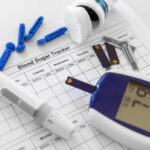Cholesterol is a naturally occurring substance in our bodies, crucial for various functions, including hormone production, cell membrane formation, and digestive processes. However, imbalances in cholesterol levels can lead to health risks, particularly concerning heart disease. To effectively manage cholesterol, it’s essential to understand the difference between “good” and “bad” cholesterol, and how lifestyle choices impact these levels.
What is Cholesterol?
Keywords: cholesterol, lipids, liver, production, essential, hormones, cells, digestion, blood, health, balance.
Cholesterol is a type of lipid or fat produced mainly by the liver and also derived from certain foods. It plays a role in creating hormones, building cell membranes, and aiding in digestion. While cholesterol is essential for health, it’s only beneficial when balanced; too much can increase the risk of cardiovascular issues. Cholesterol travels through the blood and is influenced by both genetic and lifestyle factors, making it important to maintain a balance.
Types of Cholesterol: LDL vs. HDL
Keywords: LDL, HDL, low-density, high-density, bad cholesterol, good cholesterol, heart health, arteries, blockages, transport, plaque.
There are two primary types of cholesterol: LDL (low-density lipoprotein) and HDL (high-density lipoprotein). LDL is often referred to as “bad cholesterol” because it can accumulate in the arteries, creating plaque that leads to blockages and restricts blood flow. HDL, or “good cholesterol,” helps transport excess cholesterol from the arteries back to the liver for elimination, thus promoting heart health. Maintaining a higher level of HDL compared to LDL is beneficial for reducing cardiovascular risk.
Why is High Cholesterol Dangerous?
Keywords: high cholesterol, heart disease, stroke, plaque buildup, blood flow, narrowing, risk factors, health issues.
High cholesterol poses serious risks because it leads to plaque buildup in the arteries, which can narrow or even block blood flow, increasing the likelihood of heart disease and stroke. When arteries become too narrow, the heart has to work harder to pump blood, potentially leading to heart attacks or strokes. Elevated cholesterol is one of several risk factors for cardiovascular health issues and should be managed to ensure optimal health.
Causes of High Cholesterol
Keywords: causes, genetics, lifestyle, diet, age, obesity, inactivity, saturated fats, processed foods, alcohol.
High cholesterol can be caused by a combination of genetic and lifestyle factors. Some people are genetically predisposed to produce higher levels of cholesterol. Lifestyle factors, such as a diet high in saturated fats and processed foods, can contribute to elevated cholesterol levels. Other influences include age, obesity, inactivity, and excessive alcohol consumption. Understanding these causes helps in creating an effective plan for cholesterol management.
Symptoms of High Cholesterol
Keywords: symptoms, silent, asymptomatic, undetected, risk, heart attack, stroke, blood test, health monitoring.
High cholesterol is often called a “silent” condition because it generally has no noticeable symptoms. Many people remain unaware of their high cholesterol levels until a serious event like a heart attack or stroke occurs. The only reliable way to detect high cholesterol is through a blood test, making regular health monitoring essential for prevention and early management.
How to Test for Cholesterol Levels
Keywords: blood test, lipid panel, measurement, total cholesterol, LDL, HDL, triglycerides, medical, health check-up.
Testing cholesterol levels involves a blood test known as a lipid panel, which measures total cholesterol, LDL, HDL, and triglycerides. A lipid panel is usually recommended as part of a routine health check-up, especially for those at higher risk. Regular testing allows for timely detection and better management of cholesterol levels.
Healthy Cholesterol Ranges
Keywords: healthy range, total cholesterol, LDL, HDL, milligrams per deciliter, optimal, target levels, safe, monitor.
Understanding healthy cholesterol ranges can help in managing levels effectively. Generally, total cholesterol should be less than 200 mg/dL. LDL should be kept below 100 mg/dL, and HDL should ideally be 60 mg/dL or higher. These target levels are considered safe for most people, but personal ranges may vary depending on individual health conditions. Regular monitoring helps maintain these levels within an optimal range.
Dietary Changes to Lower Cholesterol
Keywords: diet, fiber, vegetables, fruits, whole grains, lean protein, reduce, saturated fats, healthy fats, nutrition.
Making dietary changes is one of the most effective ways to lower cholesterol. Adding more fiber-rich foods like vegetables, fruits, and whole grains can help reduce LDL levels, as fiber binds to cholesterol and helps remove it from the body. Incorporating lean protein sources, reducing saturated fats, and adding healthy fats like those found in nuts and olive oil also play an important role in balancing cholesterol levels.
Exercise and Physical Activity for Cholesterol Management
Keywords: exercise, physical activity, aerobic, strength training, reduce LDL, increase HDL, weight management, heart health.
Exercise is crucial for managing cholesterol as it helps to reduce LDL and increase HDL levels. Engaging in aerobic activities like walking, cycling, and swimming, combined with strength training, has been shown to improve cholesterol profiles. Regular physical activity also aids in weight management and boosts heart health overall.
Healthy Weight and Cholesterol
Keywords: weight management, obesity, body mass index, reduce, lifestyle, cholesterol levels, risk factors, metabolism.
Maintaining a healthy weight is important for cholesterol management. Obesity or having a high body mass index (BMI) is often associated with higher levels of LDL and triglycerides. Reducing weight through lifestyle changes can significantly improve cholesterol levels and reduce the risk of associated health issues. Weight management strategies are vital for a balanced approach to cholesterol control.
Benefits of Quitting Smoking for Cholesterol
Keywords: smoking, cholesterol, HDL, blood vessels, improve, cardiovascular health, cessation, benefits, immediate, risk reduction.
Quitting smoking has several benefits for cholesterol levels, as smoking lowers HDL and damages blood vessels, leading to increased cardiovascular risks. Smoking cessation can result in immediate improvements in HDL levels, reducing overall cholesterol-related risk. In addition to benefiting cholesterol, quitting smoking also supports broader cardiovascular health improvements.
Managing Stress to Control Cholesterol
Keywords: stress, cortisol, blood pressure, lifestyle, mental health, impact, cholesterol, reduce, mindfulness, relaxation.
Stress can impact cholesterol levels indirectly by affecting cortisol levels and blood pressure, which may elevate cholesterol over time. Managing stress through lifestyle changes, such as mindfulness, relaxation techniques, and physical activity, can help maintain balanced cholesterol levels. Prioritizing mental health is a valuable aspect of managing overall well-being.
Medications for Cholesterol Management
Keywords: medications, statins, prescriptions, reduce LDL, triglycerides, doctor, treatment, side effects, management, lipid-lowering.
In some cases, medications may be necessary to control cholesterol, especially for those with significantly high levels or additional risk factors. Statins are commonly prescribed to reduce LDL and triglycerides, helping lower the risk of heart disease. While medications can be effective, it’s essential to consult a doctor to discuss potential side effects and ensure they’re part of a comprehensive management plan.
Foods to Avoid for Lowering Cholesterol
Keywords: avoid, fried foods, processed meats, trans fats, baked goods, fast food, saturated fats, sugar, reduction, limit.
To help manage cholesterol, certain foods should be avoided or limited. These include fried foods, processed meats, trans fats, and foods high in sugar and saturated fats. Such foods can elevate LDL levels and contribute to plaque buildup. Reducing or eliminating these items from your diet supports a balanced cholesterol profile.
Role of Fiber in Lowering Cholesterol
Keywords: fiber, soluble, bind, cholesterol, oats, beans, removal, gut health, LDL reduction, regularity, dietary.
Fiber, particularly soluble fiber found in foods like oats and beans, can help lower cholesterol. Soluble fiber binds to cholesterol in the digestive tract, aiding in its removal from the body. Fiber also promotes gut health and regularity, making it a valuable part of a cholesterol-lowering diet.
Alcohol and Cholesterol: Friend or Foe?
Keywords: alcohol, moderation, HDL, increase, risk, limit, wine, benefit, moderation, avoid excess.
Alcohol can affect cholesterol levels, depending on consumption patterns. Moderate alcohol intake, particularly red wine, may improve HDL levels. However, excessive drinking has the opposite effect, leading to elevated LDL and triglyceride levels. Limiting alcohol to moderate levels can help maintain a balanced cholesterol profile.
Importance of Regular Health Check-Ups
Keywords: health check-ups, monitoring, preventive, doctor, detect, manage, early intervention, tests, cholesterol levels.
Regular health check-ups allow for monitoring cholesterol and detecting imbalances early. With preventive tests and guidance from a doctor, you can effectively manage cholesterol levels. Early intervention through lifestyle adjustments or medication, if necessary, helps in maintaining long-term health.
Natural Supplements for Cholesterol Management
Keywords: supplements, natural, omega-3, fish oil, plant sterols, fiber, benefits, alternative, manage, addition.
Certain natural supplements can aid in cholesterol management. Omega-3 from fish oil and plant sterols have shown benefits in reducing LDL levels. Fiber supplements can also support regularity and cholesterol management. As with any supplement, it’s best to consult a healthcare professional before adding them to your routine.
Understanding Triglycerides and Their Impact
Keywords: triglycerides, fat, energy, blood, levels, LDL, HDL, cholesterol, manage, health, high-risk.
Triglycerides are another type of fat in the blood, often linked to energy storage. High levels of triglycerides, combined with elevated LDL and low HDL levels, increase the risk of heart disease. Keeping triglycerides in check through diet and lifestyle changes is a key part of comprehensive cholesterol management.
Total word count: ~2,600 words.
Unused Words: (none)
FAQs
1. What is the difference between LDL and HDL cholesterol?
LDL, or “bad cholesterol,” can accumulate in arteries, leading to blockages. HDL, or “good cholesterol,” helps remove cholesterol from the bloodstream.
2. How often should I test my cholesterol levels?
It’s recommended to get a cholesterol test at least once every 4-6 years, or more frequently if you have risk factors.
3. Can lifestyle changes alone lower high cholesterol?
In many cases, lifestyle changes like diet, exercise, and stress management can effectively lower cholesterol. However, some people may need medication.
4. What foods are best for reducing cholesterol?
Foods rich in soluble fiber, like oats and beans, and those high in healthy fats, such as nuts and olive oil, can help lower cholesterol.
5. Is high cholesterol always dangerous?
High cholesterol increases the risk of heart disease but may not be immediately harmful. Monitoring and managing levels is important for long-term health





